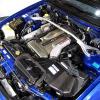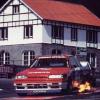Gt-r Spring/sway Bar Rates
Announcements
-
Similar Content
-
Latest Posts
-
Righto, enough of ADHD Anonymous! 🤣🤣 Rear end is completely stripped out apart from coil overs that will take 5 minutes. Fingers crossed it doesn't look like that for too long! Cleaning up some bits as I go so they can go straight back on. It amazes me how good stuff looks just with a good hard scrub! That will be it for a couple of weeks. I've got ot a bit of surgery Friday that will put me out of action for a few weeks. Hopefully the motivation is still there when I'm ready to get back into it!
-
The povo spec CA18S one, yeah. All turbos had 16x6.5 5 stud and 4pot brakes.
-
By DraftySquash · Posted
Thanks @joshuaho96 Yeah planning to buy it from these guys. I sent them an email to confirm it was genuine and not refurbished and they confirmed 🤷🏽♂️ https://partsouq.com/en/search/all?q=22448AA100 -
By DraftySquash · Posted
hahahaa @Duncan yeah that was one of the reasons I posted the link from UAE (Partsouq) I realised I'd need to sell a kidney to buy OEM but Partsouq was ~50 USD and it was quite surprising. And I was reading the full thread in here about OEM vs Splitfire vs other brands.. I honestly just want them changed to new for peace of mind. My current ones apparently have cable ties to stop it from breaking into pieces 🤣 Not done by me.....professional JDM hack done to the car from the owner in Japan lol -
By joshuaho96 · Posted
It is correct: https://www.amayama.com/en/genuine-catalogs/epc/nissan-japan/skyline/er34/6617-rb25det/engine/220 Looks like you can get one for 50 USD each from the UAE which is a pretty good price IMO.
-






Recommended Posts
Create an account or sign in to comment
You need to be a member in order to leave a comment
Create an account
Sign up for a new account in our community. It's easy!
Register a new accountSign in
Already have an account? Sign in here.
Sign In Now